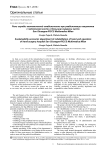Статьи журнала - Гений ортопедии
Все статьи: 2197
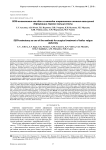
Seri-остеотомия как один из методов оперативного лечения вальгусной деформации первого пальца стопы
Статья научная
Проблема хирургического лечения деформации первого пальца стопы на сегодняшний день не утратила свою актуальность. Цель. Изучение результатов применения малоинвазивной операции SERI-остеотомии при лечении вальгусного отклонения первого пальца стопы. Материалы и методы. В отделении травматологии РКБ № 1за период с декабря 2011 по март 2014 года было прооперировано 34 больных (58 стоп) по поводу Hallux valgus в возрасте от 30 до 55 лет (29 женщин и 5 мужчин). Всем больным была произведена SERI-остеотомия первой плюсневой кости. Из них у 27 больных (42 стопы) с HVA до 40 градусов и IMA менее 20 градусов и у 4 больных (8 стоп) - с HVA более 40 градусов и IMA более 20 градусов. Четырем больным (6 стоп) была произведена косая остеотомия с удлинением первой плюсневой кости и 1 больному (2 стопы) - поперечная остеотомия без удлинения. Результаты. Через 2 мес. клинические признаки сращения костных отломков наблюдались у 24 больных. По результатам рентгенологических исследований сращение было признано удовлетворительным у 13 больных, слабым - у 15 больных. Признаков сращения не наблюдалось у 3 больных. Трое больных выпали из наблюдения. Коррекция была признана удовлетворительной у всех больных. Все больные довольны результатами операции. Отдаленные результаты лечения оценивались по шкале AOFAS. На четвертом месяце наблюдений результаты лечения были признаны отличными у 22 больных (95-97 баллов), хорошими - у 23 больных (80-92 балла), удовлетворительными - у 10 больных (72 балла). Заключение. SERI-остеотомия при коррекции вальгусной деформации первого пальца стопы может быть предложена как одна из малоинвазивных и эффективных методик оперативного лечения и требует более внимательного дальнейшего изучения.
Бесплатно
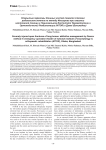
Статья научная
We studied 34 severely injured open fractures of long bones, managed by Ilizarov external fixator in National Institute of Traumatology & Orthopaedic Rehabilitation, Pink unit-II (Ilizarov, Deformity Correction and Reconstruction Unit) Dhaka, Bangladesh. All the patients were selected according to inclusion criteria and through counseling the patients and his/her relative. Duration of study was 2 years. Average post-operative hospital stay was 10 days. Pin sites inflammation, pin loosening and pain at rest, swelling of leg and thigh were the commonest complications in our study. Average union time was 20 weeks and union rate was 100 %. Close adherences to Ilizarov principles make it now possible to successfully treat orthopedic conditions that previously were fraught with high morbidity rates and poor results.
Бесплатно
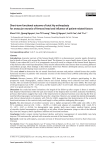
Статья научная
Introduction Avascular necrosis of the femoral head (ANFH) is a phenomenon vascular supply disruption lead to death of bone cells around the femoral head. The disease is a severe health issue all over the world. Within 2 years about 80 % to 85 % of symptomatic cases will result in collapse of the femoral head. Recovery of hip function after total hip arthroplasty (THA) may be influenced by many factors that vary among different racial/ethnic groups. Most findings in this field have been from Western developed nations, and not much information from developing Asian countries is available.This study aimed to determine the six-month functional outcome and patient-related factors that predict functional recovery in patients with avascular necrosis of the femoral head (ANFH) undertaking total hip arthroplasty (THA).Methods Between January 2022 and December 2023 there were 143 patients participating in this prospective study. Demographic, medical history and clinical findings were collected from their medical records. The six-month functional outcome was evaluated using the Harris hip score (HHS). The mean age of the participants was 55.90 ± 11.49 years, and the majority (86.7 %) were male. Most patients had excellent (43.4 %) or good outcome (51.7 %).Discussion Our study had some limitations: the length of the follow-up after surgery is short (6 months), that hospital-related factors like the type and volume of the hospital have not been analyzed. Nonetheless, previous observations suggest that most of the improvement in physical function occurs during the first six months following surgery and remains the same for a long time. However, our sample has typical demographic and clinical characteristics of patients with THA for ANFH, suggesting that determinants of the 6-month functional outcome in the current study could apply to other patients undergoing this surgery.Results The determinants of excellent outcome were a higher preoperative HHS (odds ratio (OR): 4.369, 95 % confidence interval (CI) =1.854 - 10.299; p function show_abstract() { $('#abstract1').hide(); $('#abstract2').show(); $('#abstract_expand').hide(); }
Бесплатно

Статья научная
The first report on the simultaneous lengthening of the femur and compression of the non-healing zone with the use of the previously implanted intramedullary nail is presented. A 38-year-old man experienced a segmental hip fracture, developed a persistent atrophic non-infarction with a significant shortening of the segment. To correct the difference in limb length, elongation was performed in combination with compression of the rigid nonsense zone with the use of an intramedullary nail in situ and annular external fixation. This report describes for the first time the successful technique of bilocal compression of the zone of nonunion and lengthening of the femur on the nail to eliminate the consequences of fracture.
Бесплатно
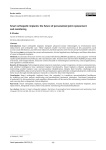
Smart orthopedic implants: the future of personalized joint replacement and monitoring
Статья научная
Introduction Smart orthopedic implants integrate advanced sensor technologies to revolutionize joint replacement and orthopedic care. These implants enable real-time monitoring of key parameters such as wear, load distribution, and infection indicators, facilitating early intervention and personalized treatment. This review aims to evaluate the current advancements, clinical applications, challenges, and future directions of smart orthopedic implants. Methods A systematic literature review was conducted following PRISMA guidelines, analyzing peer-reviewed studies published between February 2015 and January 2025. Sources were retrieved from PubMed, Scopus, Web of Science, and Google Scholar. Inclusion criteria focused on technological innovations, clinical applications, and regulatory considerations. Results & Discussion Technological advancements in materials, sensor integration, wireless communication, and artificial intelligence have optimized implant functionality. Smart implants enhance postoperative monitoring, predict implant wear, and personalize rehabilitation. Despite their benefits, challenges such as biocompatibility, data security, battery life, and regulatory approval hinder widespread adoption. Addressing these issues through interdisciplinary research is critical for future developments. Conclusion Smart orthopedic implants have the potential to transform musculoskeletal healthcare by enabling real-time patient monitoring and personalized treatment strategies. Continued innovation in materials, AI‑driven analytics, and regulatory frameworks will be crucial for overcoming current limitations and ensuring their widespread clinical adoption.
Бесплатно
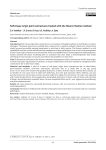
Soft-tissue origin joint contractures treated with the Ilizarov fixation method
Статья научная
Introduction Soft-tissue origin joint contractures are a common orthopedic problem. It could be due to various etiologies. Treatment options are available from conservative to surgical methods. These joint contractures slowly become irreversible causing impairment in activities of daily routine. The Ilizarov method is a well established and time-tested method used for management of bone pathologies, but its use in the management of soft-tissue origin contractures is also possible. It has an established role in neoosteogenesis and histogenesis. Fixator assisted soft-tissue stretching done at sustained slow pace leads to histoneogenesis that avoids stretching of neurovascular structures and reduces the possibility of recurrence.Aims To determine usefulness of the Ilizarov method in management of joint contractures of soft tissue origin; to meet functional requirements of patients; to study complications of Ilizarov method in management joint contractures due to soft tissue origin.Material and methods A total of 6 cases of soft-tissue origin joint contractures due to tuberculosis, post-traumatic stiffness, post-burn contracture, deformity due to a snake bite in the age group from 3 to 55 years were treated with gradual distraction of joint with the Ilizarov method from January 22 to October 23. Two cases were of triple knee deformity, two were post-traumatic elbow stiffness, one was post-burn great toe contracture and one was post snake bite valgus foot contracture. All cases were operated with transarticular Ilizarov frame application and gradual distraction of joints and soft tissue with the help of hinge- and rod distractor assembly done. All cases completed follow up of 1 year. Aggressive physiotherapy was given postoperatively.Results All cases obtained a reasonable functional outcome, with no recurrence of deformity. All patients walk independently.Conclusion The Ilizarov method can be used for treating joint contractures due to traumatic and non-traumatic pathologies.
Бесплатно

Статья научная
Introduction Over the last decades numerous new materials and techniques for bone tissue engineering have been developed. The use of bioresorbable polymeric scaffolds is one of the most promising techniques for surgical management of bone defects. However, the lack of bioactive properties of biodegradable polymers restricts the area of their application for bone tissue engineering.The aim of study was to apply solvent/non-solvent treatment to coat the surface of 3D-printed bioresorbable poly(ε-caprolactone) scaffolds with bioactive hydroxyapatite particles and report on the physicochemical properties of the resulting materials.Material and Methods In the present study, biomimetic poly(ε-caprolactone) scaffolds were 3D-printed via fused deposition modeling technology and their surface was treated with the solvent/non-solvent method for coating with bioactive particles of hydroxyapatite.Results It has been found that treatment in the mixture of toluene and ethanol is suitable for the coating of poly(ε-caprolactone) scaffolds with hydroxyapatite. The scaffolds maintain porous structure after treatment while hydroxyapatite particles form homogeneous coating. The amount of hydroxyapatite on the treated scaffolds was 5.7 ± 0.8 wt. %.Discussion The proposed method ensures a homogeneous coating of outer and inner surfaces of the poly(ε-caprolactone) scaffolds with hydroxyapatite without a significant impact on the structure of a scaffold. Fourier-transform infrared spectroscopy confirmed that the solvent/non-solvent treatment has no effect on the chemical structure of PCL scaffolds.Conclusion Coating of biomimetic 3D-printed PCL scaffolds with bioactive hydroxyapatite by the solvent/non-solvent treatment has been successfully carried out. Upon coating, scaffolds retained their shape and interconnected porous structure and adsorbed hydroxyapatite particles that were uniformly distributed on the surface of the scaffold.
Бесплатно
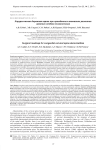
Surgical roadmap for congenital cervical spine abnormalities
Статья научная
Study Design A descriptive study based on medical records of patients with congenital cervical spine abnormalities. Objective The hypothesis of the study was that patients with congenital cervical spine abnormalities could be divided according to the main pathological syndrome. Summary of Background Data Abnormalities of the cervical spine belong to embryopathies and are a very heterogeneous group. The variety of this pathology made it hard to create a general classification based on a morphological approach. Materials Medical records of 68 patients with congenital cervical spine abnormalities were analyzed and were a clinical material for working out the algorithm of their management. Computer tomography, magnetic resonance imaging (MRI) and selective angiography were used to specify the abnormality structure and preoperative planning. Use of functional positioning was an important feature in all these investigations. Various techniques of surgical treatment such as halo, anterior and posterior fusion, decompression of the cerebral, spinal cord and cervical vertebral arteries, revision of the spinal canal, neurolysis, and meningolysis were used in 28 patients aged from 2 to 47 years old. Results All patients were divided according to leading pathological syndromes. Those were instability, stenosis and brain ischemia. Each group had its own important subgroup. The main surgical steps in management of complex congenital anomalies of the cervical spine were bone fusion or (and) decompression of the brain and spinal cord. Conclusions Selection of the main pathological syndrome or combination of syndromes is a simple and effective way for making the right decision when treating patients with congenital cervical spine abnormalities. Syndromic approach can be used for prognosis as well.
Бесплатно
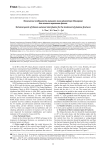
Technical points of Ilizarov external mini-fixator for the treatment of phalanx fractures
Статья научная
The Ilizarov external mini-fixator (IEMF) has become an effective tool for the treatment of acute and chronic hand and foot injuries and deformity correction due to its advantages of easy fixation, good holding power, and artful appearance. However, there are relatively few clinical reports on this technique. Materials and methods From June 2019 to March 2021, we preformed IEMF on 113 patients with open phalanx fractures as emergency surgery, and all patients had 3-6 months follow-up. Results All fractures achieved clinical healing. Among them, pin site infection occurred in 8 fractures (7.07 %), arthrolysis occurred after 6 fractures (5.3 %), and 4° rotation malunion occurred in 3 cases (2.65 %).
Бесплатно

Статья научная
Introduction Management of pediatric long bones fractures is a complex and rapidly evolving field. Traditionally, casting and conservative techniques played a key-role in the management of fractures in skeletally immature patients. However, the surgical approach has evolved steadily over the past four decades or so and increasing evidence has been published supporting the advantages of fixation techniques over conservative methods. The purpose of this narrative review is to outline how innovations in orthopedic surgery have changed the rationale of treating long bones fractures in children and adolescents with focus on surgical techniques, particularly elastic stable intramedullary nailing (ESIN). Material and methods We aimed to describe the main trends in pediatric long bones fractures management and to identify its specificities and difficulties as well as the best standard of care. Results The introduction of ESIN has profoundly influenced the management of pediatric upper and lower extremity fractures. Overall, in comparison to conservative techniques, advantages of ESIN include minimally invasiveness, short hospital stay, primary bone union, early mobilization and progressive weight bearing, and good outcome with low complication rate. Moreover, the flexible nail can be used as a closed reduction tool itself. Conclusions Irrespective of the technique performed, the key-concepts remain 1) the proper understanding of the injury to treat; 2) the identification the main characteristics of the patient; 3) the pros and cons of each technique; and 4) the potential complications.
Бесплатно
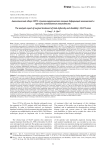
The analysis report of surgical treatment of limb deformity and disability: 35,075 cases
Статья научная
Objective To investigate the incidence characteristics and corrective strategies of various limb deformities treated by Qinsihe orthopaedic team in the past 40 years, so as to provide a large sample for understanding the causes, types and treatment methods of limb deformity and disability in China. Method A total of 35,075 cases were treated by Qinsihe orthopaedic team from May 1978 to December 2018. The age, gender, deformity characteristics, etiological and pathological composition, regional distribution and surgical methods of the patients were statistically analyzed. Results There were 20,458 males and 14,617 females. The age was 1 year to 82 years old, average 20.5 years. The majority of subjects were from 11 to 25 years old or 19,363 cases (63 %). There were 33,259 cases (94.82 %) of interventions on lower extremity. The geographical distribution of patients covers all the provinces, municipalities directly under the central government, autonomous regions in China and 12 foreign countries. There were 202 etiologies involving neurological, heredity, metabolism, traumatic sequelae, congenital, vascular, lymphoid, skin, endocrine, iatrogenic and so on. The top six deformities were due to poliomyelitis sequelae, cerebral palsy, traumatic sequelae, spondylolysis sequelae, genu varus&valgus, congenital talipes equinovarus. There were 280 kinds of surgical methods, the majority of which were Achilles tendon lengthening, supracondylar osteotomy, subtalar joint arthrodesis, tibiofibular osteotomy, metatarsal aponeurosis and Achilles tendon replacement of peroneal longus muscle, etc. 8,702 cases were treated by orthopedic surgery combined with external fixation, including the Ilizarov fixator in 3,696 cases and hybrid fixator in 5,006 cases. Conclusion Qinsihe orthopaedic database with a history of 40 years is the largest one of limb deformity and disability in China. It reflects the etiology, type, population characteristics, surgical methods and strategy of limb disability and deformity, which can be treated by orthopaedic surgery. The data is a great treasure for orthopaedics and disability medicine in China and worldwide, and its important academic value and historical significance need to be further excavated and deep studied in future.
Бесплатно
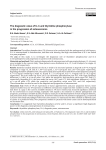
The diagnostic value of IL-6 and thymidine phosphorylase in the progression of osteosarcoma
Статья научная
Introduction Thymidine phosphorylase (TP) is known to be correlated with the pathogenesis of solid tumors. IL-6 is overexpressed in osteosarcoma, and data exist showing that high concentrations of IL-6 are linked to a poor prognosis.The aim of this study is to investigate the diagnostic role of thymidine phosphorylase and IL-6 in the pathogenesis and progression in patients with osteosarcoma.Materials and methods Thirty patients diagnosed with osteosarcoma (with age ranging between 15-44 years) were included in the current study. Those patients were distributed as 6, 15, 5 and 4 subjects for stages AI, BI, II and III respectively.Results Statistical analysis pointed out that IL-6 tends to be increased patients in stage III (3.89 ± 0.34 ng/ml) compared to stage AI, BI and II: 1.48 ± 0.22 ng/ml, 1.55 ± 0.24 ng/ml and 2.45 ± 0.45 ng/ml respectively. Regarding thymidine phosphorylase, the current study also found that it tends be increased patients in stage III 8.3 ± 0.33 ng/ml comparing to stage AI, BI and II: 7.2 ± 0.92 ng/ml, 6.82 ± 1.14 ng/ml and 7.8 ± 0.22 ng/ml, respectively. The area under the curve (AUC) for thymidine phosphorylase was 0.87, with high significant difference p function show_abstract() { $('#abstract1').hide(); $('#abstract2').show(); $('#abstract_expand').hide(); }
Бесплатно
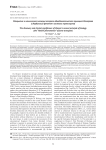
Статья научная
The understanding of Ilizarov’s biological principles is guiding clinical treatment. Ilizarov’s First Principle of Biology, Distraction Histogenesis, is a fundamental guidance for bone lengthening. The “Harbin Phenomenon” is an extension of “Transformation Histogenesis”, which was discovered by bone transport for bone defects treatment. It describes the transformation and regeneration capacities of scar tissues under slow and rhythmic distraction, and this transformation satisfies the morphological and functional requirements. This principle is a supplement to the first principle, and could be Ilizarov’s Second Principle of Biology. Together they form the basis to guide clinical bone transport treatment.
Бесплатно

Статья научная
Ilizarov’s tibial transverse transport (TTT) technique can promote vascular regeneration. It has been used in the treatment of a variety of lower limb ischemic diseases, such as thromboangiitis obliterans, diabetic foot ulcers, etc. Recently, several novel therapeutic effects have been discovered based on TTT treatment. For instance, in the treatment of thromboangiitis obliterans, an “Open Skylight Effect” was well defined in which the symptom of resting pain disappeared following tibial cortex osteotomy (Long Qu, 2001). During the treatment of bilateral diabetic foot gangrene, patients that received TTT treatment on the one side of the lower limb were observed to have a simultaneous healing of ulcers on both sides, which was termed as the “Summon Effect” (Qikai Hua, 2017). In 2019, we characterized the above discoveries as the “Twin Open Skylight and Summon Effects”. These findings will inspire more potential clinical applications of TTT technique.
Бесплатно

Статья научная
Introduction Nonunion or delayed union is a known postoperative complication in long bone fractures. Substance abuse may impair bone healing. In this paper, we investigated the effect of narcotics on healing time in femoral shaft transverse fractures and the effect of substance abuse and smoking on postoperative healing time. Material and methods This cohort study was conducted at the Orthopedic Clinic of Poursina Hospital, Rasht from 2017-2019. Patients with transverse fractures of the femoral shaft who underwent intramedullary rod insertion were followed for 6 months. Bone healing time based on substance abuse and smoking status was evaluated. Results There was a significant association between various groups (categorized based on cigarette smoking and using drugs) in terms of bone healing status (P = ы0.006). There was a statistically significant difference in healing status among the control group, smoker group, and addict and smoker group (P = 0.034 and P = 0.004, respectively). However, there was no statistically significant difference in healing status between control and addicts group (P = 0.517). Conclusions Treatment efficiency and performance in addicted and smoker patients are more unfavorable and hence which, in turn, requires more follow-up periods; therapies such as bone grafting and other methods are more frequently considered in addicted and smoker patients in case of lack of healing reaction. Therefore, prevention plans in high-risk groups can play a significant role in primary identification, treatment, and reducing the complications of fractures.
Бесплатно

Статья научная
Introduction Post-surgical dysphagia is one complication particularly common in early postoperative period after Anterior cervical spine surgery (ACSS). However, the pathophysiology of dysphagia after surgery has not been well understood. This study aimed to analyse the frequency and risk factors for developing dysphagia following ACSS and find an effective program to prevent and treat. Materials and methods A prospective observational study was conducted on 50 patients undergoing ACSS from April 2021 to Oct 2022 at the Department of Orthopedics, Guru Gobind Singh Medical College and Hospital, Punjab (India). Patients were in the age group of 27 to 60 years. The indications for cervical surgeries were traumatic, degenerative, infective and neoplastic involving C2 to C7 vertebra with signs of neural compression unresponsive to conservative treatment. Data on patient age, gender, duration of surgery, intraoperative blood loss, segment operated and the number of segments operated were collected. Follow up time was 24 weeks. Results Incidence of dysphagia was 20 % (10/50) within first week which reduced to zero at completion of six months of follow-up. Dysphagia was present in 2 % (1/50) patients in age group 21–40 years and 18 % (9/50) patients in age group of 41–60 years. 14.6 % (6/41) males and 44 % (4/9) of females had dysphagia. Prevalence of dysphagia in patients with one affected segment was 9.5 % (4/42), two segments was 80 % (4/5) and three segments was 50 % (1/2). Mean duration of surgery in patients with post-operative dysphagia was 115 mins. Mean blood loss in patients with post-operative dysphagia was 171.40 mL Mean Et (endotracheal) tube cuff pressure in patients with post-operative dysphagia was 24.70 cm H2O. Within the first week of surgery, there were 10 cases out of which one was mild, six were moderate and three were severe. Conclusion Despite the fact that some inconsistency is there in the literature regarding risk factors it can be safely concluded from our study that incidence of post-operative dysphagia can be reduced by decreasing blood loss during surgery, reducing surgery time and optimizing Endotracheal tube cuff pressure during surgery.
Бесплатно
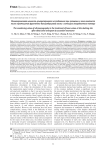
Статья научная
Purpose To explore the value of ultrasound in the treatment of bone union at the docking site by accordion technique. Methods Sixteen patients were recruited. The accordion operation was performed at the docking site after bone transport. The specific operation process was compression, suspension of adjustment, distraction, retraction. Ultrasound was used to monitor the hematoma, blood flow and callus in and around the docking site at each stage. Results (1) At the compression, there were 14 cases with hematoma and 2 cases without hematoma. (2) The size of hematoma was negatively correlated with the bone healing time of the docking site and the blood flow resistance index. (3) The Adler grading of blood flow gradually increased before the retraction, and then gradually decreased. But the degree of callus mineralization continued to rise. Conclusion (1) Ultrasound can dynamically monitor the change trend of hematoma, blood flow and new callus at the docking site during accordion operation, so as to predict the tendency of bone healing at the docking site. (2) This study can preliminarily demonstrate that the compression stress applied in accordion technique can promote the bone healing at the docking site.
Бесплатно
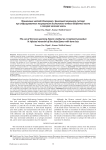
Статья научная
Background Infected nonunion of the distal femur is a very difficult entity to treat; it grossly affects daily living and adds economic burden to the society. There is no consensus on which surgical technique of its management leads to the best outcome. Materials and methods We reviewed 10 patients with infected nonunion of the distal femur and bone loss who were treated by radical surgical debridement and application of the Ilizarov external fixator from January 2010 to December 2015. Results The mean follow-up after removal of the frame was 18.6 months (range, 14 to 30 months). No patient was lost to follow-up. The mean external fixator time was 313.9 days (range, 275 to 362 days) which correlated with the final lengthening achieved. According to Paley’s grading system, eight patients had excellent clinical and radiological results and five excellent and good functional results. Bony union, ability to bear weight fully, and resolution of the infection were achieved in all the patients. Conclusion Distal femoral nonunion is a complicated orthopedic entity as it may be associated with nonunion, infection, bone loss, shortening, soft tissue scar, contracture, restriction of movement, disuse osteopenia. Ilizarov external fixation is a definitive treatment modality in these cases as it gives stability, allows early weight-bearing, compression/distraction at fracture site, helps to arrest infection and achieve union while corticotomy helps to regain length.
Бесплатно

Tibial fibrous dysplasia in children treated by Ilizarov technique - a review of treatment options
Статья научная
Fibrous dysplasia is a pathological condition, where normal medullary bone is replaced by fibrous tissue and small woven specules of bone. Fibrous dysplasia can occur in epiphysis, metaphysis or diaphysis. Occasionally, biopsy is necessary to establish the diagnosis. We present a review of operative treatment using the Ilizarov technique.
Бесплатно

